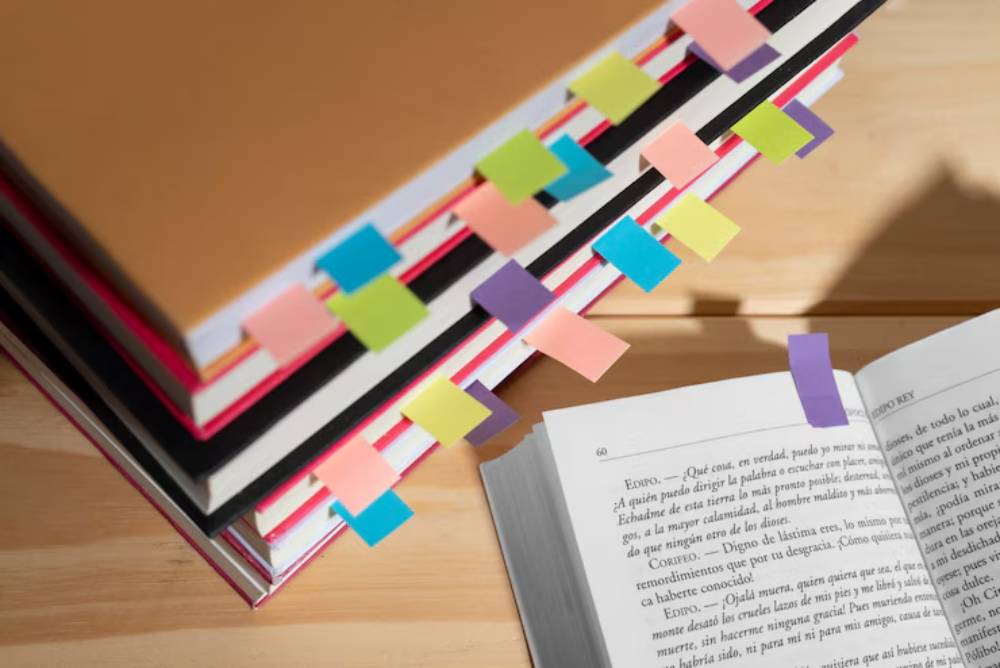
How to Annotate Texts for Maximum Retention
Ever felt like you’ve read something only to forget it a day later? You’re not alone. Passive reading often leads to fleeting comprehension, especially when studying dense materials or prepping for exams. But there is a smarter way to read that boosts your engagement and helps the information stick: annotation.
Annotation is the active process of marking up a text with notes, highlights, and symbols to enhance understanding and memory. It’s not just a fancy way to doodle in the margins. Done right, annotating helps you engage with the material, make connections, and retain what matters most.
In this guide, you’ll discover effective techniques for annotating textbooks, academic articles, and even novels. Whether you’re a student, a lifelong learner, or someone looking to read more deeply, you’ll walk away with practical strategies and highlighting tips to make your notes more meaningful.
The Science Behind Annotation and Memory
When you annotate a text, you’re actively processing information rather than passively absorbing it. According to educational psychologist Dr. John Dunlosky, active engagement during reading strengthens neural pathways related to memory and comprehension. Simply put, the more you do with the information as you read, the better you remember it.
Annotation combines visual, kinesthetic, and cognitive actions. This multi-modal involvement improves recall because you’re:
- Seeing important points visually (through underlining or colour-coding)
- Physically interacting with the text (writing in the margins or sticky notes)
- Thinking deeply about the meaning and significance of the content
When all three work together, your brain is far more likely to retain the information long-term.
Choosing Your Annotation Tools

Before diving into your text, it helps to be prepared with the right tools. Here’s a quick checklist:
- Highlighters in different colours
- Pens or pencils for underlining and margin notes
- Sticky notes or flags for marking pages
- A notebook or digital app for longer reflections (Notion, Evernote, or OneNote work well)
Digital readers like Kindle, GoodNotes, or PDF editors also allow for high-quality annotation with styluses or built-in tools.
Annotation Methods: Find What Works for You
1. Colour-Coding Highlights
Use different colours to represent different types of information. For example:
- Yellow for key ideas or thesis statements
- Blue for unfamiliar vocabulary
- Green for examples or case studies
- Pink for personal thoughts or questions
This method not only makes your notes more visual but also allows you to scan quickly for the kind of information you need.
2. Margin Notes
Don’t be afraid to write directly in the book (if it’s yours). Use the margins to:
- Paraphrase complex ideas in your own words
- Ask questions about what you don’t understand
- Draw arrows to connect related points
- Note your emotional reactions or “aha!” moments
These notes can become anchors that help jog your memory later.
3. Symbols and Abbreviations
Create a shorthand system that speeds up your note-taking. Common symbols include:
- * = Important
- ? = Something to clarify
- ! = Surprising or interesting
- \u2192 = Leads to or causes
- \u2665 = Something you relate to
Develop your own personal key so you stay consistent across texts.
4. Summarising Sections

At the end of each chapter or major section, pause and write a 2-3 sentence summary. This habit helps you consolidate what you’ve read and identify gaps in your understanding.
5. Use of Sticky Notes
Sticky notes are perfect for:
- Longer thoughts that won’t fit in the margin
- Reminders to revisit certain sections
- Creating quick-reference tabs for exams or papers
Annotation for Different Text Types
Annotating Textbooks
- Focus on definitions, key concepts, and summaries
- Use colour to distinguish between theory, example, and conclusion
- Highlight only a few key sentences per page to avoid clutter
Annotating Academic Articles
- Skim the abstract, intro, and conclusion first
- Highlight the research question, methodology, and findings
- Note any terms or data that need further research
Annotating Fiction and Literature
- Look for themes, character development, and motifs
- Mark powerful quotes or passages that evoke strong emotions
- Write your interpretations or predictions in the margins
Common Annotation Mistakes to Avoid
Even with the best of intentions, it’s easy to overdo it or annotate in a way that doesn’t help your memory. Here are some pitfalls to watch for:
- Over-highlighting: If everything is marked, nothing stands out
- Copy-paste syndrome: Avoid just underlining without adding your own notes
- Lack of consistency: Random colours or symbols can confuse rather than clarify
Making Annotation a Habit
The key to getting the most out of annotation is to do it regularly. Here are some tips to make it a consistent part of your study routine:
- Set a goal: Annotate at least 10 pages or one chapter per session
- Review your notes: Spend a few minutes going over your highlights before bed or before class
- Create a master summary: Compile all your annotations into one document for revision
Real-Life Example: Annotating for Exam Success
Sarah, a university psychology student, struggled with remembering dense theoretical frameworks. She started using a three-colour highlight system and margin notes with definitions in her own words. Before exams, she created a “greatest hits” document using her annotations. Her grades improved from a 2:2 to a solid 2:1 within one term. More importantly, she felt confident walking into her assessments.
Annotation: A Game-Changer for Learning

Annotation is one of those rare techniques that’s simple but deeply effective. When you annotate with purpose, you’re not just reading — you’re actively thinking, questioning, and remembering. Whether you’re tackling academic texts or leisurely fiction, marking up your pages can make a world of difference.
So next time you pick up a book, grab your highlighter or stylus too. Start small, stay consistent, and watch your comprehension grow. You’ll be amazed at how much more you retain.
Ready to take your reading to the next level? Leave a comment with your favourite annotation tip, share this guide with your study group, or subscribe for more learning strategies that work.


